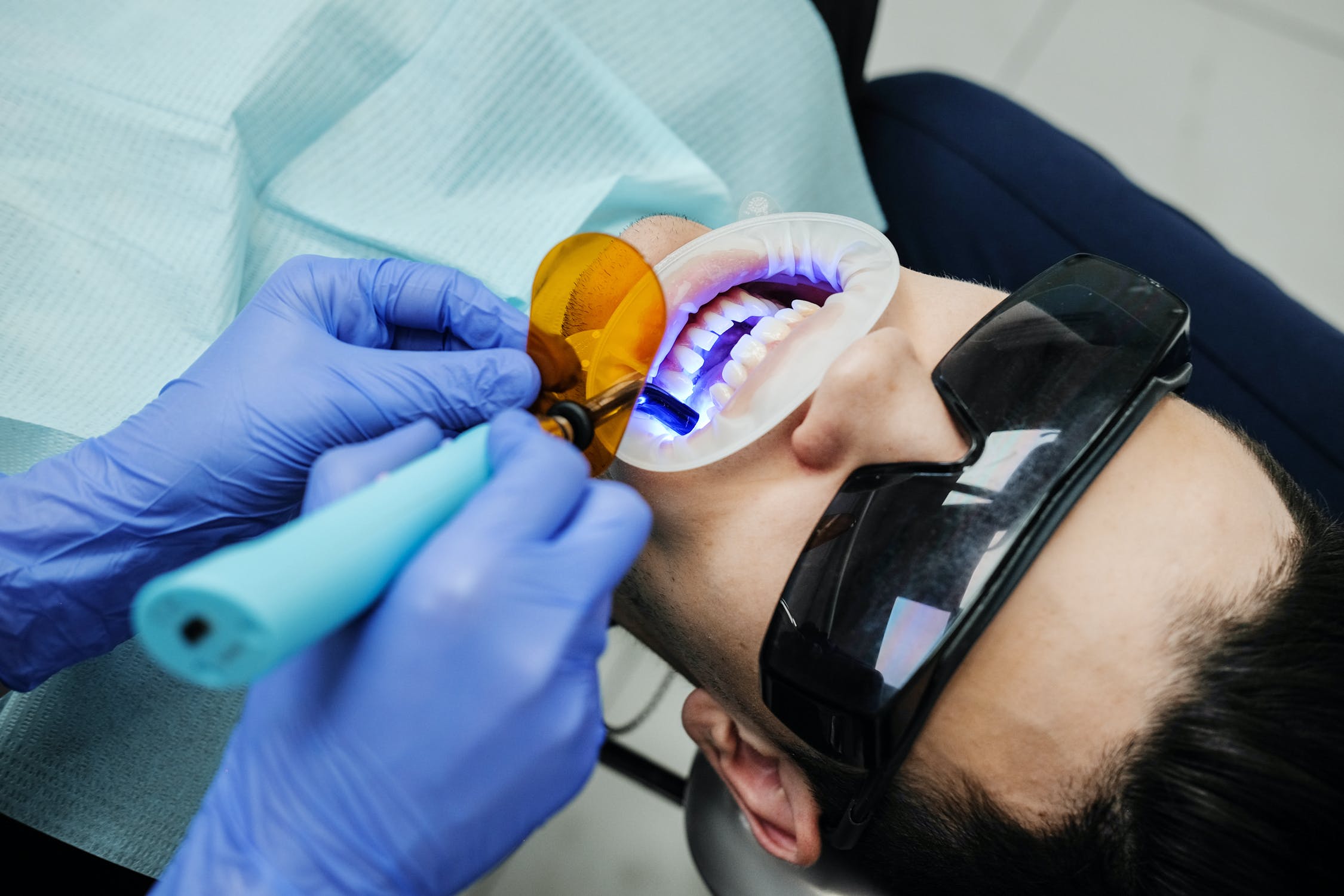
As a form of dental treatment, orthodontics is a little bit different than most; it doesn't involve taking away any teeth or tooth components, nor adding any. It concerns itself with the location of teeth, because a perfectly strong healthy tooth that is in the wrong place disrupting your bite is as ineffective as a badly decayed one. Not to mention the aesthetic value that many patients place on straight aligned symmetrical teeth, something that Mother Nature is not always eager to provide. Orthodontic treatment relies on continually applying pressure to teeth. Through consistency in both the quantity of force and the direction applied, teeth can be moved over time. To apply these forces, orthodontic tools are used. They come in a range of shapes and sizes from full headgear, (metal headgear with forehead and shoulder braces), to a slender mouth guard like Invisalign in Glasgow, but all with the same principle; to apply force accurately and consistently to the patient's teeth.
Types of orthodontic tools
Traditional metal braces
Traditional metal braces are the most common and probably most famous orthodontic tool. They have been widely used for nearly 100 years with vast documentation showing their effectiveness. Over the last few decades, they have been sidelined due to a change in patient expectations focusing on more subtle and convenient tools that are less disruptive to their day-to-day lives.
Clear aligners
Clear aligners are very lightweight orthodontic tools and are visually discreet, allowing the teeth to move with minimal pressure. The plastic that makes up the aligner is very tight to the teeth, and this is how they work. Over time, with applied pressure, the teeth take on new positions, the aligners will feel looser and then the patient has to change to the next aligner in the series. This short duty cycle of less than 2 weeks for each aligner allows them to be minimalistic, compared to other orthodontic tools that have to be robust enough to last the entire length of the treatment schedule. They can be removed and fitted by the patient at any time and are recommended not to be worn during eating, making them easier to clean and maintain, as well as less disruptive to dietary choices.
Functional appliances
Functional appliances generate force from the inside of the mouth; they can be used to widen the palate by pushing teeth outwards. They have to be worn consistently in order to be effective, but are removable so you can take them out to eat and drink. They can also be disruptive to speech.
Retainers
Retainers are often used at the end of orthodontic treatment and although they do not realign teeth themselves, they are very important at maintaining the progress that has been made. Teeth tendons and other elastic tissue anchor them to the jaw; when they have been moved into a new position, these tendons are placed under stress. When an orthodontic tool is removed, these tendons can pull the teeth back to the original position; this is known as reversion. Retainers hold teeth in their final position until the tension on that elastic tissue fades, leaving the teeth permanently in their new positions.




